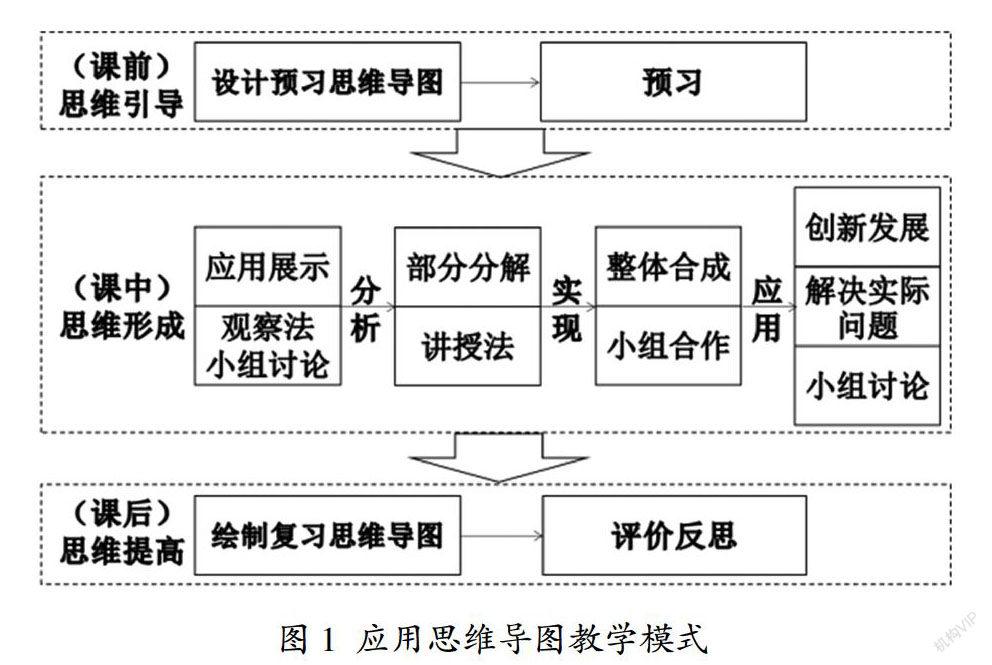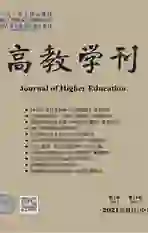运用思维导图构建知识网络的教学应用研究
2021-09-12黄琼
黄琼



摘 要:作为有效的思维可视化工具——思维导图,一方面有助于知识整理,另一方面有利于激发思维和思维整理,在大多数学科教学应用中取得了一些成绩。本研究提出运用思维导图构建知识网络的教学模式,并以微机原理课程教学进行实验验证,实践表明思维导图能够帮助学生掌握知识,在一定程度上具有良好的教学效果,但仅停留在对现有资料的整理,属于“有意识的高效”阶段,未融入个人见解,把握其本质,对于学生思维能力的培养作用欠佳。因此下一步研究方向旨在深化思维导图的应用,将问题解决的方法与思想体现在思维导图中,引导学生学会“分析问题,理性认识问题,最后解决问题”,以培养学生思维能力为目标,研究“算法融合的思维导图运用”教学模式,切实提高学生的思维效率。
关键词:微机原理;思维能力;思维导图;知识网络
中图分类号:G642 文献标志码:A 文章编号:2096-000X(2021)23-0137-05
Abstract: As an effective thinking visualization tool, Minding map is helpful to knowledge arrangement on one hand, and on the other hand, it is helpful to stimulate thinking and thinking arrangement. Some achievements have been made in most of the teaching applications of subjects. This study proposes a teaching mode of constructing knowledge network by using minding map and experimental verification by teaching with microcomputer principle. Practice shows the minding map can help students mastering knowledge and has good teaching effect to some extent. But it only stay in the sorting stage of existing data, which belongs to the stage of "conscious and efficient", it does not integrate into personal opinions and grasp it's essence. For the cultivation of students' thinking ability is not very good. Therefore, the next research direction is to deepen the application of minding map, to embody the method and thought of problem solving in the minding map, to guide students to learn to "analyze problems, rationally understand problems and finally solve problems", aiming at cultivating students' thinking ability, to study the teaching mode of "application of minding map with algorithm", so as to improve the thinking efficiency of students.
Keywords: microcomputer principle; thinking ability; mind map; knowledge network
随着发展学生“核心素养”体系的提出,作为“核心素养之核心”的思维能力受到越来越多的重视[1]。思维能力指运用归纳和演绎、分析和综合等方法对问题进行分析、抽象、推理、判斷、综合等加工改造,把握事物内在实质联系,解决问题的能力。培养学生思维能力是教育活动的主要目标。广大教师和教育研究者努力尝试运用思维工具,以促进学生思维能力发展。1975年由认知研究基金会出版的《柯尔特思维训练课程》包括思维的广度、思维的组织、思维的交互、创造力、信息与感觉、行动六大模块共60个思维工具①,其中思维导图作为有效的思维可视化工具[2],已逐渐推向课堂,受到师生们的广泛欢迎。思维导图在绘制过程中不仅能高效地组织知识网络体系,利于学生学习记忆,而且能有效地激发思维,有助于思维能力的形成。本研究考虑将思维导图方法引入教学,研究运用其构建知识网络的教学模式,并结合微机原理课程实践的具体应用进行详细阐述和验证分析。
一、研究意义与可行性
布鲁纳认为,人在学习过程中不是对所有刺激都接受,而是根据自身的认知结构有选择地接受并加工,而认知结构是学习者大脑中所有知识和他们的组织结构②。因此,学习效果的好坏主要在于学生对知识的组织。将零散、孤立的知识点编织成一张网,网络中知识点间良好的逻辑组织形式,帮助学生理解旧知识,并在此基础上实现内化迁移,构建新知识。
1980年美国认知心理学家E·加涅首次提出,知识网络是两类知识,即程序性知识和陈述性知识,在大脑内系统化的存储方式③。应用于教育教学领域,丁家永③认为知识网络中联系的多维性能够充分体现知识点间的联结关系,同时网络的开放性基于学习的动态性,在原有网络中加入新知识及其联结关系,使知识网络不断充实扩展,促进认知水平的提高。因此,知识网络的构建对教育非常有意义。
